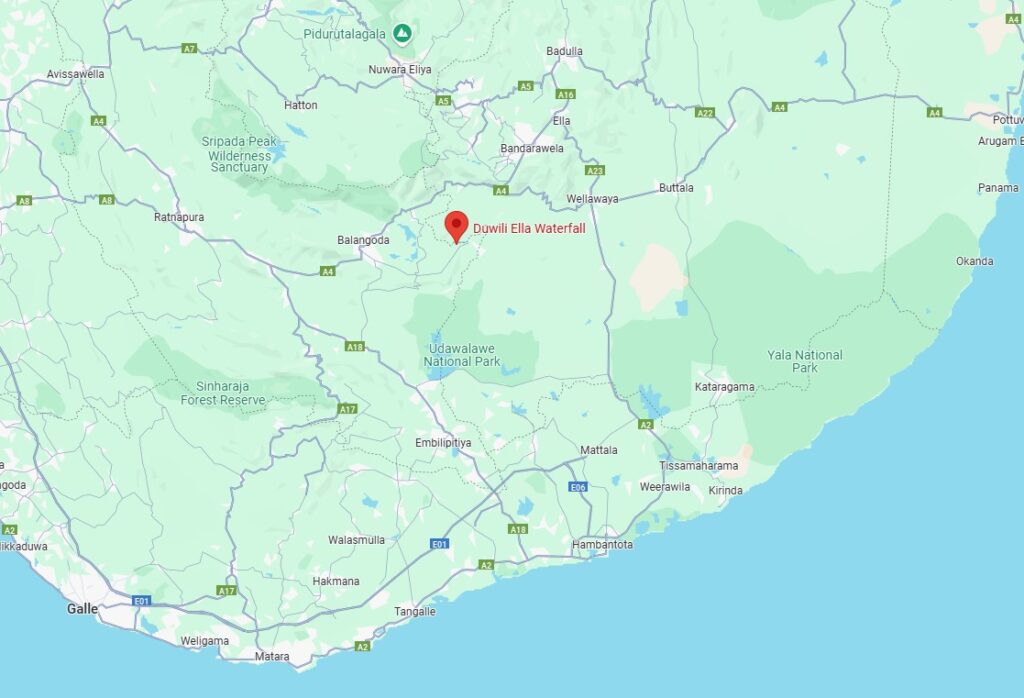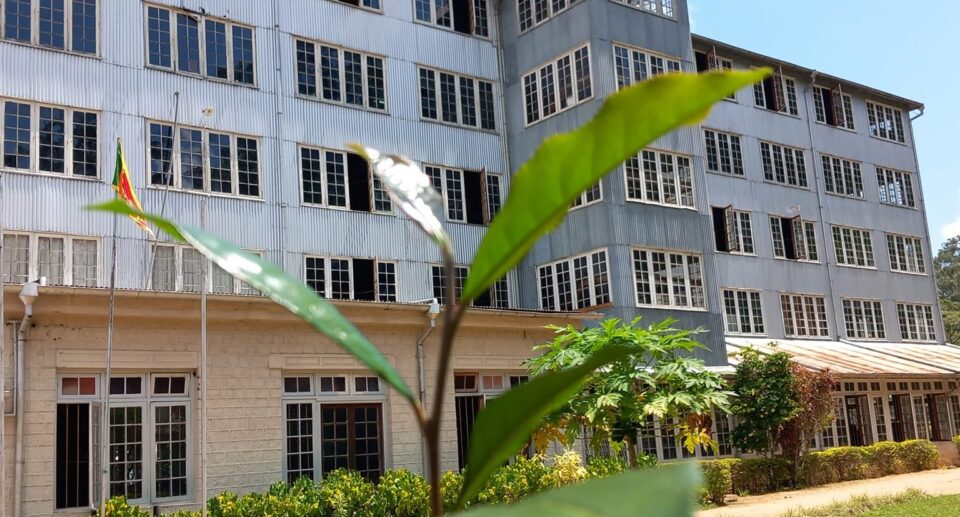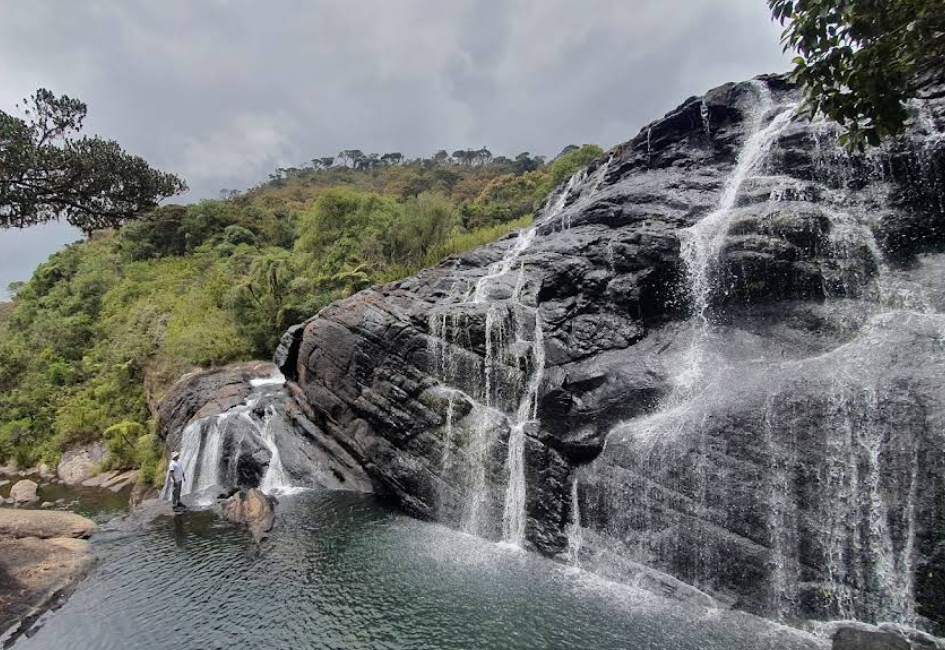Doovili Ella Falls: A Natural Wonder of Sri Lanka
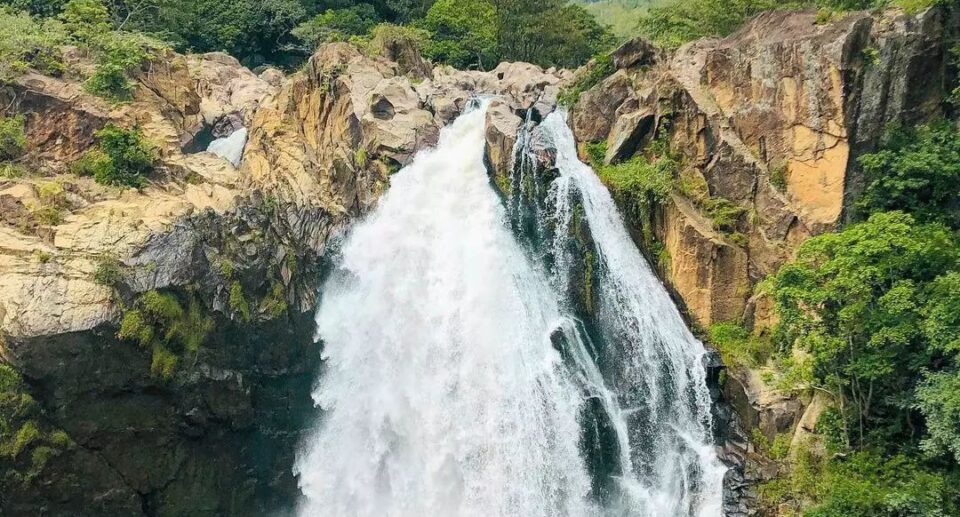
Under the creases of the foggy Knuckles Mountain Range in Sri Lanka’s Central Province is one of the island’s lesser-famed, but absolutely captivating waterfalls — Doovili Ella Falls. Not so well known to the world as some of the more popular cascades of the nation, like Diyaluma or Bopath Ella, Doovili Ella (also spelled “Duwili Ella”) is a hidden gem, beloved by the locals and visited by adventurous travelers in increasing numbers.
With its off-the-beaten-path location, otherworldly beauty, and intriguing folklore, Doovili Ella is more than a waterfall—it’s an immersive experience, giving visitors a glimpse of Sri Lanka’s untamed, unspoiled heartland.
Name and Meaning
The “Doovili Ella” name is one that is taken from the Sinhala words “Doovili,” meaning “dust,” and “Ella,” meaning “waterfall.” The name is a lyrical one, referencing the spray of mist from the waterfall, which is something typically seen as a white dust hovering in the forest air. Especially in morning sun or sunsetting golden light, the tiny spray of the falls glimmers like powdered gems on the wind—thus the sweet and apt name, “Dust Waterfall.”
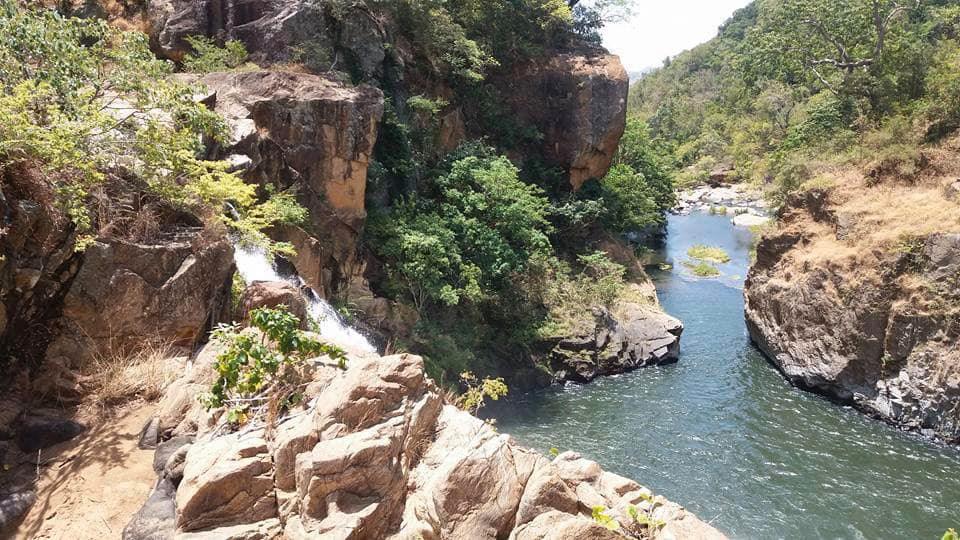
There are actually several waterfalls in Sri Lanka named “Doovili Ella,” but the most popular one is near Bambarella, at the edge of the Knuckles Conservation Forest in the Kandy District.
Geographical Setting
Doovili Ella is near the village of Bambarella in the foothills of the Knuckles Mountain Range, a UNESCO World Heritage Site with breathtaking views and exceptional biodiversity. The Knuckles Range, named so because the mountains within it resemble the knuckles of a clenched fist when viewed from certain angles, is one of Sri Lanka’s most ecologically significant areas.
Reaching the falls is part of an adventure itself, typically entailing a trek through tea plantations, pine forests, and jungle trails depending on the path taken. Which is why it’s such an ideal spot for nature lovers, trekkers, and isolation seekers and those looking for a natural marvel from the crowds of tourist trails.
The Falls: A Natural Spectacle
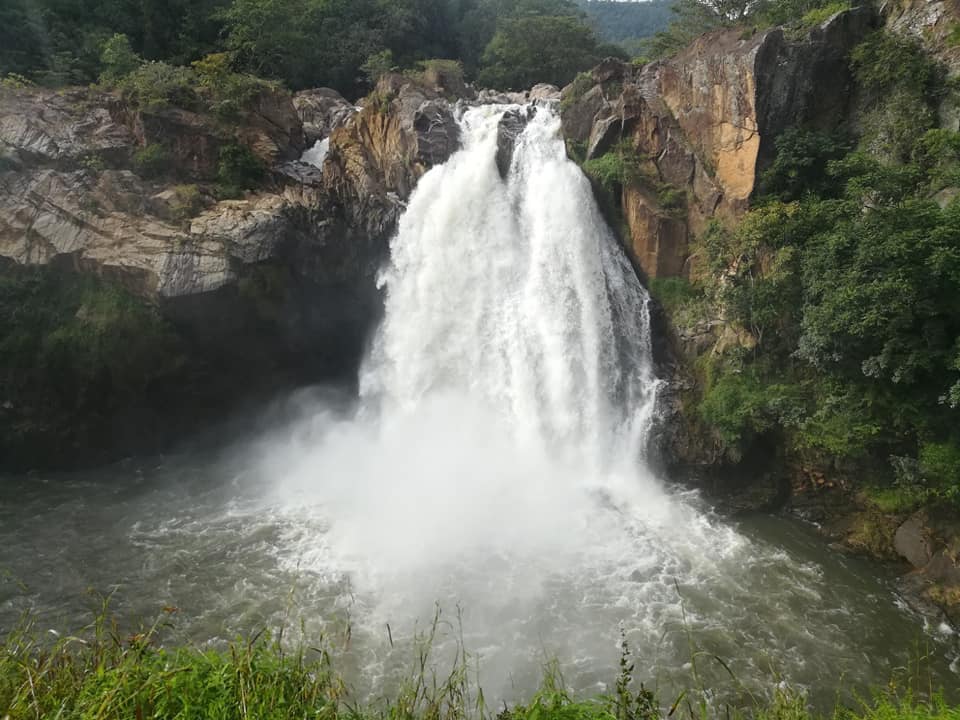
Doovili Ella falls from a distance of approximately 40 meters (130 feet) into a deep natural pool surrounded by dense foliage and rock cliffs. Distinctive to it, as opposed to most other waterfalls, is the quantity and force of the spray—a thin mist that ascends high into the surrounding forest, the effect being that of drifting smoke or “dust.”.
The water comes from one of the Hulu Ganga tributaries, which flows through the Knuckles massif, sustaining its ecosystem as well as farm life in nearby villages. During the onset of wet weather, the falls are most spectacular and breathtaking, tumbling over the cliff and making a deafening roar as it flows through the jungle. At dry season, the falls become weaker, revealing more of the face rock and rendering it safer to visit and swim.
The Hike and Journey
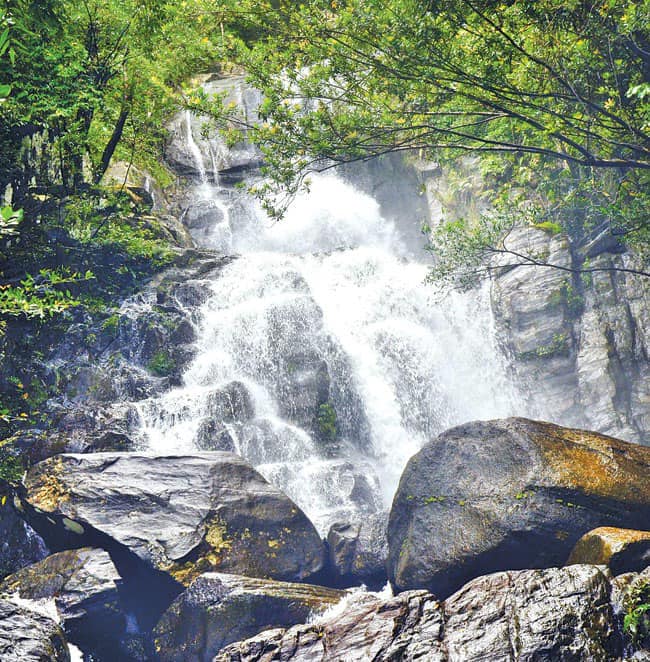
Getting to Doovili Ella is not as simple as driving up to a viewpoint. The waterfall lies several kilometers from the nearest motorable road, requiring a hike through rugged terrain. Depending on your starting point, the trek can take 1 to 2 hours, and it’s recommended to go with a local guide, especially if you’re unfamiliar with the region.
The hike itself is part of the reward. You’ll pass through tea gardens, cloud forests, and bamboo groves, encountering endemic flora and possibly glimpsing rare bird species. The trail is rich with birdsong, and the air is cool and fresh — a far cry from the hot plains or coastal regions of Sri Lanka.
Just short of the waterfall, the noise of flowing water becomes more intense, and the temperature level plummets slightly because of the spray. Then, rounding a bend, the entire splendor of Doovili Ella is seen—towering, graceful, and perpetually shrouded in mist.
Swimming and Safety
At the base of Doovili Ella is a large natural pool, perfect for a refreshing swim. The water is extremely clear, especially in the dry season, and the rocks that encircle it are good places to sit and take in the view. Watch out, however—especially after rain, when the water becomes deeper and the currents stronger.
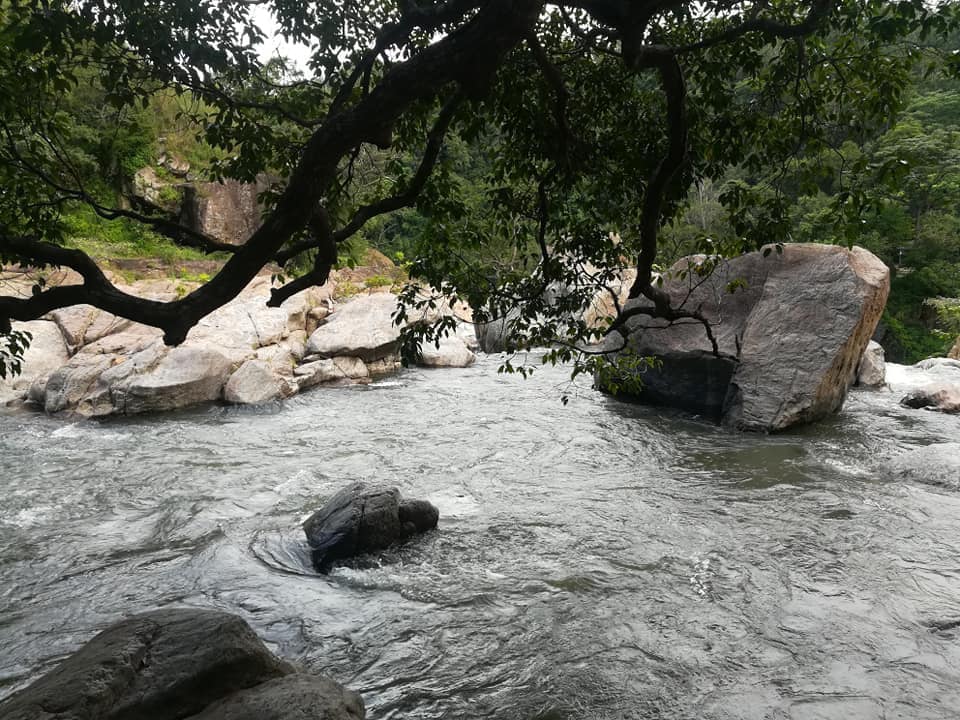
Visitors should not climb wet rocks or stand directly under the falling water due to the risk of slipping from wet rocks or falling objects from above. Always consult locals or guides who know the terrain.
Folklore and Local Beliefs
Like most of Sri Lanka’s waterfalls, Doovili Ella is encircled in myth. One of the best-known myths relates to a forest spirit that dwells within the falls, protecting the area from harm. Village folk will often speak of hearing odd voices or catching sight of faint lights late at night around the waterfall.
Others believe that the Doovili Ella mist is sacred, that it has healing properties, and pilgrims make no hesitation about going to the site during holy days or the full moon to make sacrifice or bathe in the waters. Whether you believe in the paranormal or not, the environment at the site—cool, quiet, and securely grounded on earth—accounts for the longevity of such myths.
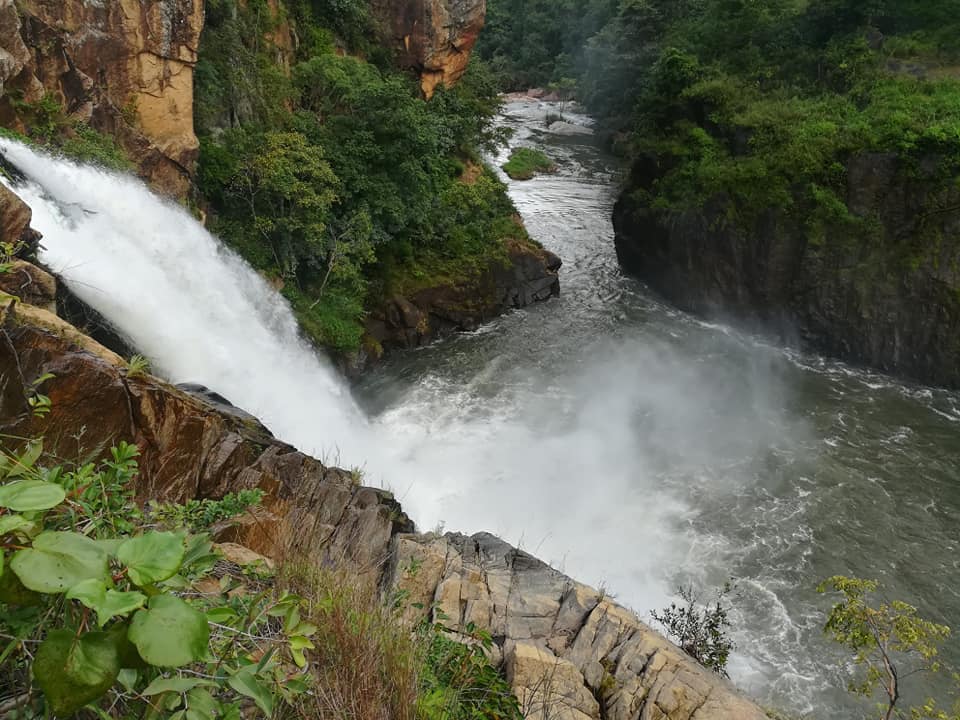
Best Time to Visit
The ideal time to visit Doovili Ella is during inter-monsoon or initial dry seasons, i.e., between January and March or July and September. The trails are dry and secure, and the waterfall still flows nicely during this period.
In the southwest monsoon (May–July), the trail may be slippery and challenging, but the falls themselves are most spectacular. Those who visit during this time must be well-prepared with proper footwear and gear.
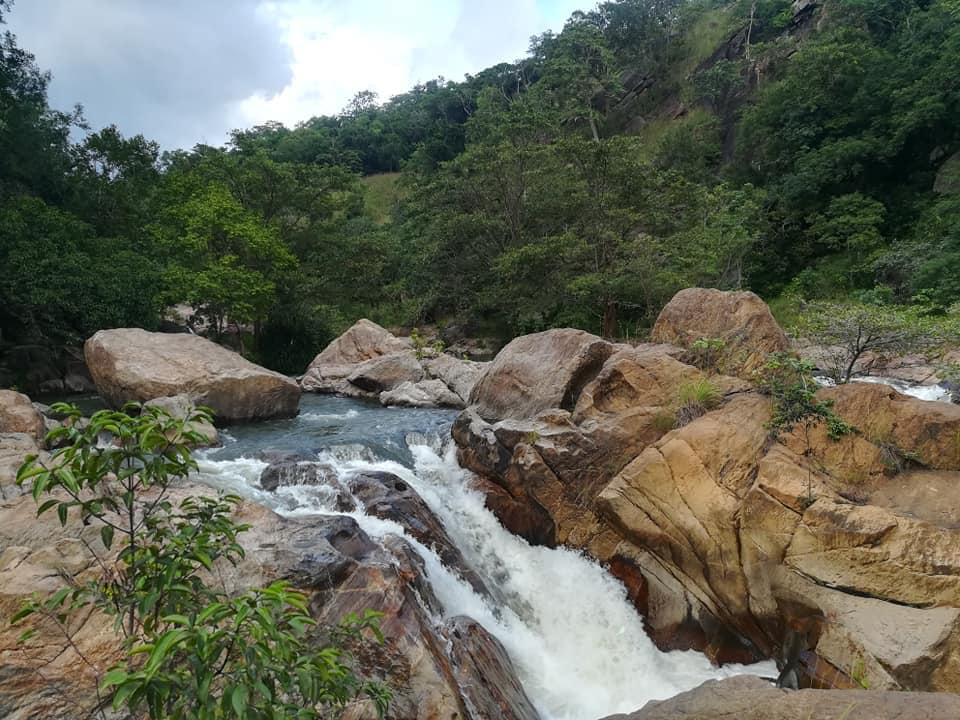
Eco-Tourism and Conservation
Doovili Ella is located in the Knuckles Forest Reserve, which is under legal protection by Sri Lanka due to its ecological value. Hundreds of endemic flora and fauna species, and most of them are endangered, inhabit the area.
Tourists are asked to practice responsible tourism: Do not litter, Do not play loud music or disturb wildlife. Use designated tracks. Use local guides and eco-friendly accommodations. Efforts are being made to implement community-based tourism for nearby villages so the villagers can reap benefits from it without losing their natural heritage.
Nearby Attractions
For travelers who want to see more of Knuckles,
nearby attractions are: Mini World’s End – A stunning cliff view with a panoramic perspective. Meemure Village – Sri Lanka’s remotest and most traditional village. Corbett’s Gap – A picturesque mountain pass perfect for sunrise or sundown. Hulu Ganga and River Trails – Serene riverside walking trails perfect for bird-watching and nature walks.
